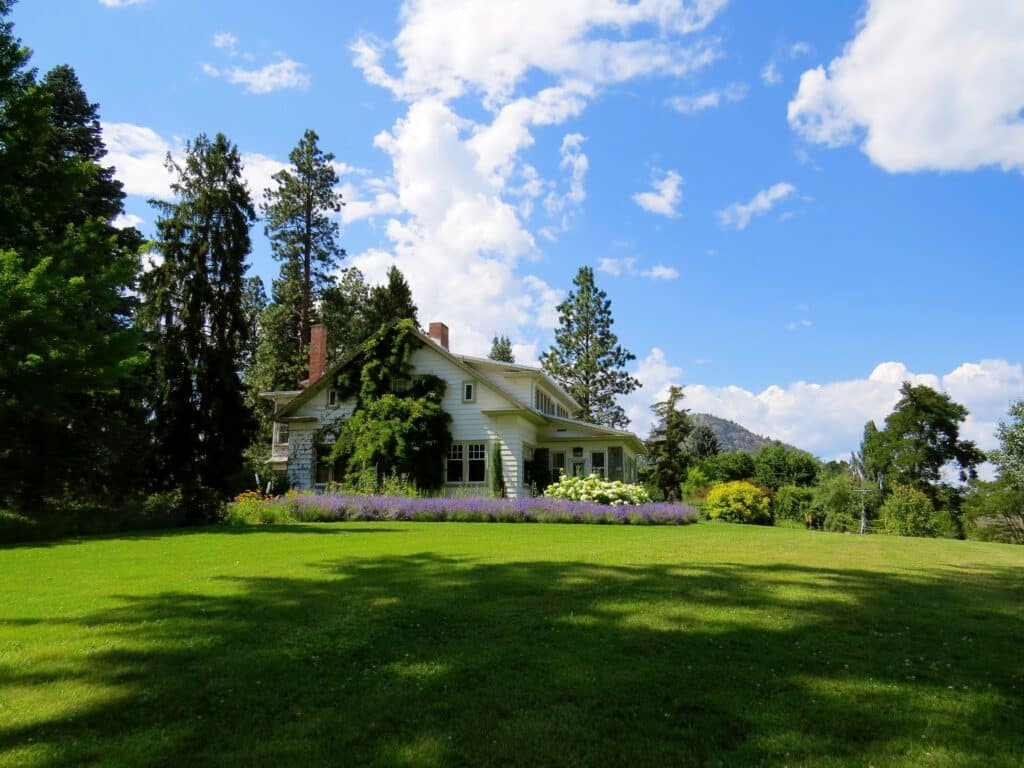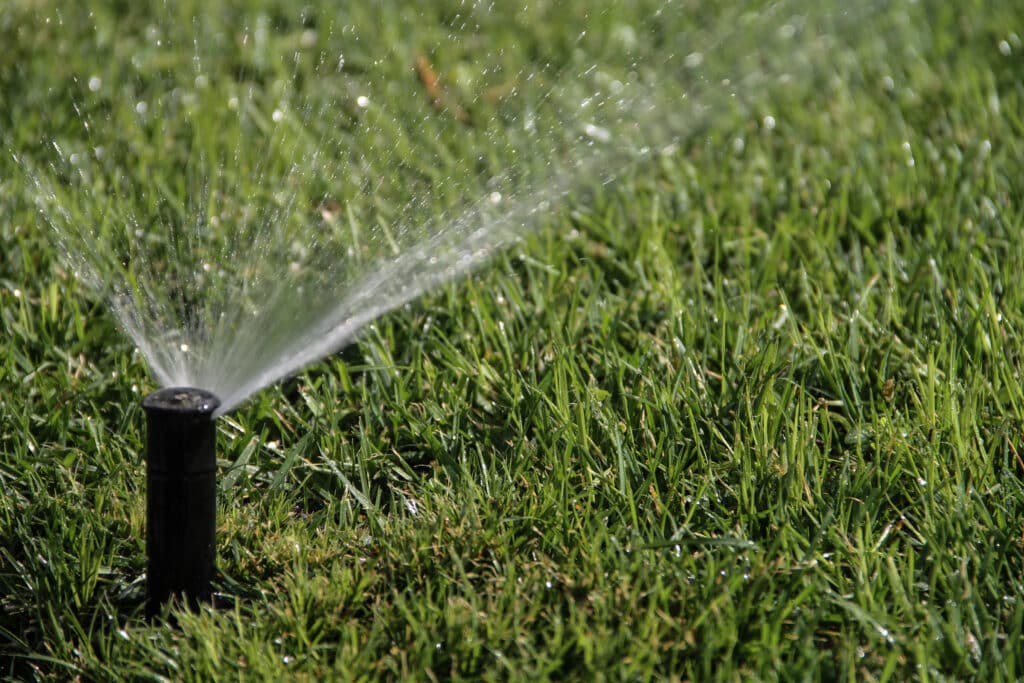Landscape irrigation systems have changed significantly in the last twenty years. More intelligent technology makes them easier to use and customize to save time and money.
Minnesota is blessed with abundant moisture year-round, but conserving water supplies is rapidly becoming a top priority in communities across the country. Homeowners invest in automatic irrigation systems to protect the beauty and long-term vitality of their landscapes. In some regions of Minnesota these systems are only used occasionally, but in those peak watering times it is vital that they work as planned and designed.
In addition to the initial investment to install an irrigation system, there are the costs of making incidental repairs and adjustments as landscaping plants mature. Even technology upgrades are easier if that basic design is sound, so let’s start there to learn what homeowners need to know about their automatic irrigation system.
Irrigation System Design
There are a number of factors to consider when designing an irrigation system.
Water Pressure
Strong water pressure is invaluable because it makes everything else work better, eliminating the need for low-pressure nozzles and booster pumps.
It’s not uncommon for water pressure to fluctuate in some municipalities. To balance the demand on the community supply, watering is only permitted at certain times of day and days of the week, typically alternating days for adjacent homes.
Booster pumps can be a significant but necessary investment. By increasing the water pressure to the system, water can flow farther and more uniformly.
One common cause of low water pressure is a reduction in pipe diameter at its source within the home. A licensed plumber can readily fix this for a reasonable amount. The increase in pressure will not be great, but it increases efficiency and run time.
Soil Type and Slope
All landscapes are sloped for proper water management, with unique areas using supplemental systems for proper drainage.
If a planting bed or lawn area is steeply sloped, that must be factored into the location of irrigation heads. In some circumstances drip irrigation may be used in conjunction with spray heads.
Our Minnesota soils are mostly dense and clayey. They will hold a great deal of water but will not absorb it quickly. Watering frequency and duration are key design factors for managing this.
Plant Requirements
A rule of thumb in the Midwest is that planting beds are watered separately from turfgrass.
Ornamental plantings can easily be overwatered because our clay soils do not drain well. Whereas turfgrass is more durable. If overwatered, it can bounce back, but that is not true for woody ornamentals.
Drip irrigation is practical for planting beds because it provides minimal water flow, but the disadvantage is the system can be accidentally damaged during cultivation. The alternative is spray nozzles on 2-4’ tall risers. Plants are misted for 5-10 minutes at the most, enough to bridge the gap to the next rainfall.
Nozzle Selection
Pairing nozzles with plant needs is part science and part trial and error.
Nozzles can be selected for full, half, and quarter circle patterns. Adjustable nozzles will fine-tune these patterns from one-quarter to slightly less than a full circle.
Other variations are the height, distance, and nature of the water pattern. For example, low-flow nozzles are used in tight areas where the desired amount of water is minimal.
Homeowners can buy the most common nozzles at garden centers and home improvement stores. It’s a good idea to keep a few on hand in case one is accidentally damaged with a lawn mower or shovel.
Nozzles are easily replaced by manually unscrewing from the irrigation head. When the nozzle is removed, just below it is a filter that can become clogged with grass clippings or other debris. Each new nozzle comes with a fresh replacement filter.
Irrigation Maintenance And Adjustment
Irrigation system designs must be field tested to achieve optimum performance. Industry experts sometimes refer to this evaluative process as a wet check. As a minimum, a wet check should be conducted at the beginning, middle, and near the end of the growing season.
It is recommended that these checks are recorded to better understand changing seasonal conditions and issues that seem to return.
- Is coverage 100% with complete overlap?
- Is the water usage consistent with recent conditions?
- Is the controller backup battery fresh?
- Do any of the zones call for timing adjustment?
- Are electronic valves opening and closing completely?
- Are nozzle adjustments necessary due to winds causing gaps or over spray?
- Are the filters all clear?
- Should nozzles be adjusted or changed to fix excessive runoff?
- Is it best to relocate, modify, or remove heads due to maturing plants?
Smart Sprinkler Systems and Enhancements
Smart irrigation controllers are prevalent on commercial properties where water usage costs are substantial. In addition to that, the optics for brands wasting water during or after a rainstorm is a factor too.
The investment in smart residential controllers, sometimes known as weather-responsive controllers, is moderate. In most cases, digging up legacy systems is not necessary. Simply disconnect the old controller and connect the new smart controller to your Wi-Fi system.
Smart systems are enhancements that introduce new ways to manage water usage, such as in-ground moisture sensors. The question is whether the additional expense and effort are justified. Maybe not if your system already has a rain shutoff device.
Homeowners who travel frequently may benefit greatly from these upgrades. There’s peace of mind knowing everything is working well, and if the system isn’t, it’s comforting to know it can be diagnosed and disabled if necessary.
We believe that an educated homeowner who conducts regular checks is sufficient. He or she may be better if they have a smart controller to assist them. Awareness is key, regardless of the age or sophistication of your irrigation system.
Architectural Landscape Design: Helping Homeowners Enjoy Better Living
Here at ALD, our top priority is creating living spaces that are right for you. Our landscape design team will work with you from concept to construction to create the right landscape for your personal needs. Contact us today for a free consultation to explore your next outdoor living project.


